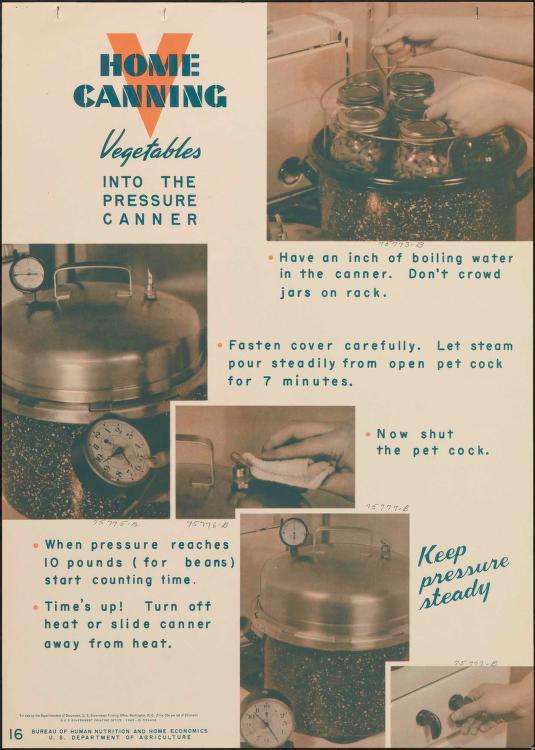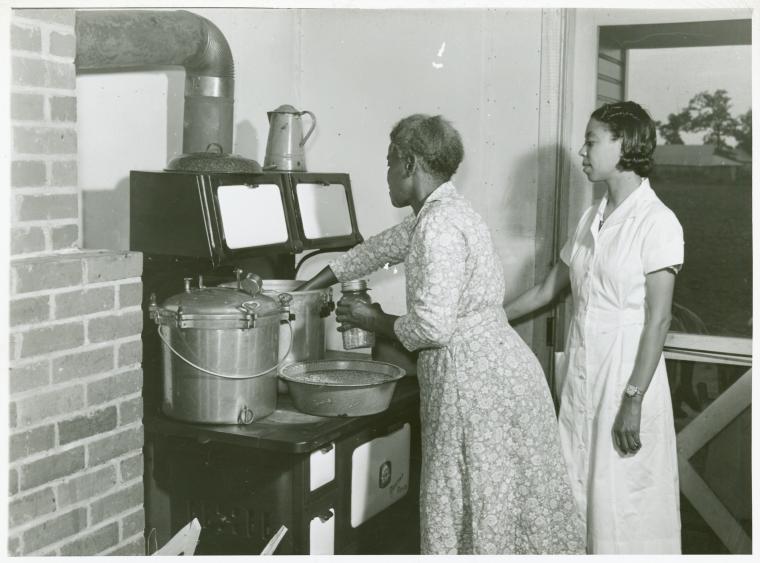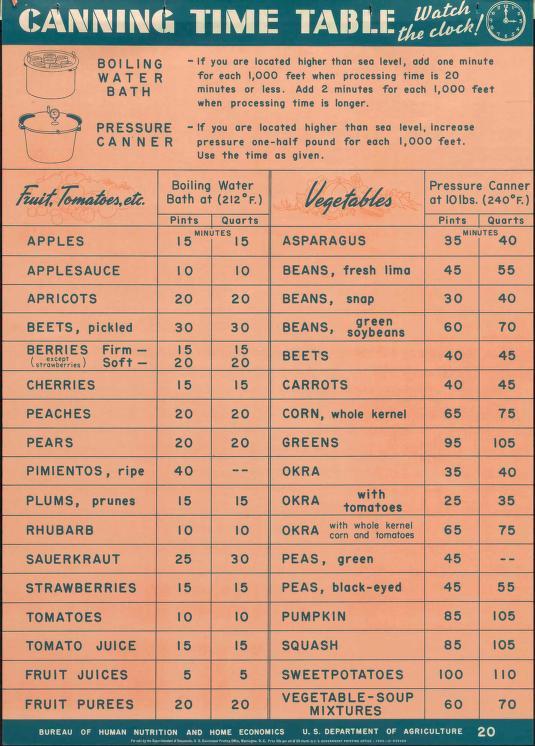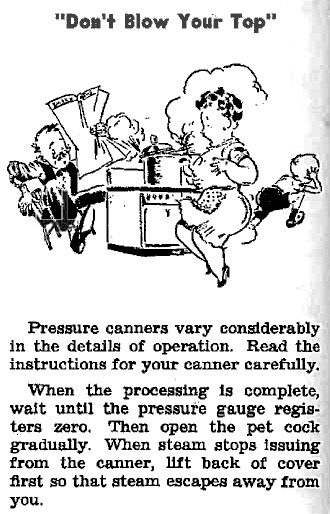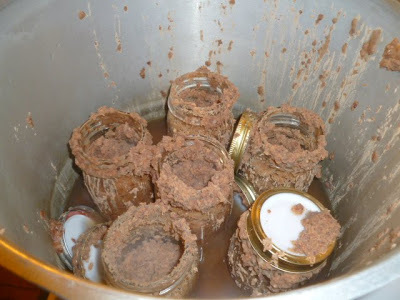Pressure Canning
Every experienced home canner today knows the whys and wherefores of canning under pressure, knows that this is the one and only safe way to put up most vegetables and meats. Since nonacid foods need heat above the boiling point to make them safe, and since you can only get that high a temperature under pressure, you must have a steam pressure canner for the job. Into the canner go your glass jars or tin cans filled with vegetables or meat. The top of the canner clamps down and you process according to the time and pressure worked out by the canning investigator.
--Breazeale, J. F. & Benson, O. H. (1936). Home canning methods. United States Department of Agriculture, Office of Information. Retrieved from https://archive.org/details/homecanningmetho1936unit
In order to kill bacteria and spores such as botulism, low-acid foods must reach an internal temperature of 240 degrees, which can only be reached through the use of a pressure canner (Tope, 1977).
When using a pressure canner the importance of proper use cannot be understated. Jar lids should be tightened appropriately. Never force-cool a pressure canner as that may result in the explosion of jars or the warping of the canner lid (Preserving Foods, n.d.).
Do not hasten the cooling of a pressure canner by applying cold or wet cloths, or by placing it on a cold surface. To do so may crack the canner...
With the mason jar the cap is screwed on until it is tight and then turned back one-fourth inch.
--Stanley, L. & Stienbarger, M. C. (rev. 1938). Home canning of fruits, vegetables, and meats. United States Department of Agriculture, Farmers' Bulletin, 1762. Retrieved from https://archive.org/details/CAT87205286
 An official website of the United States government.
An official website of the United States government.


